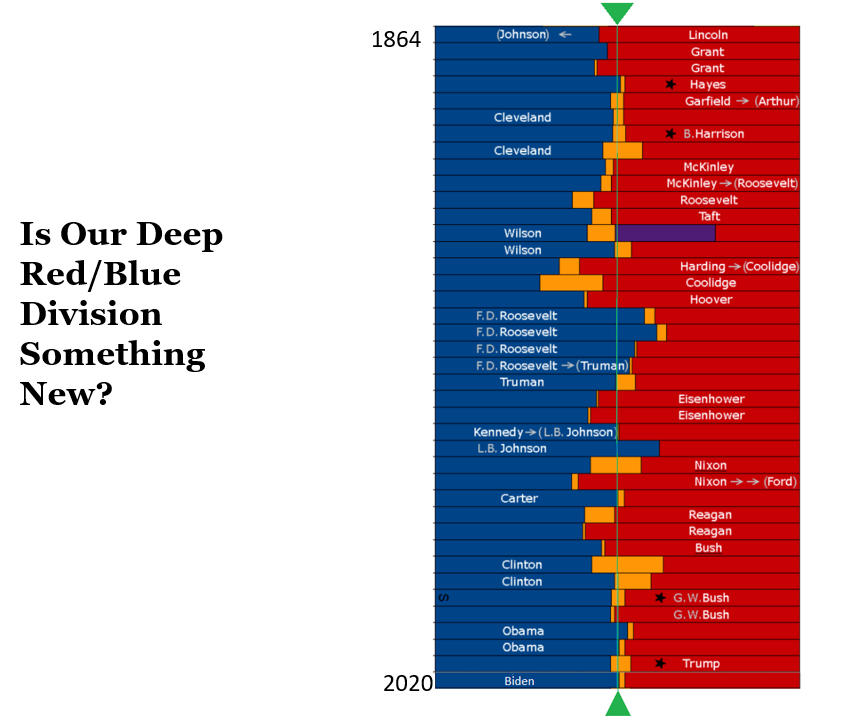America Divided? Why?
Unless you have been living under a rock, you know that we
just held a national election. You have
also heard people say that our country is deeply divided; more so than ever
before. Is that really true? I am not the kind of person who likes being
told what to think, so I did a little research of my own.
Mr toastmaster, fellow toastmasters and guests. I would like to share with you the product
of my research. I’ll share my screen.
Here is a depiction of our division in national elections
going back 150 years. It looks pretty close
to 50-50 to me. So it is not true that the
red/blue split is something new.
But wouldn’t it be more interesting if research could show
that we have been divided over the same issue the whole time? It’s probably impossible to prove that, but
I did find a few crumbs of evidence.
I went back further in time to the year 1789. The year when our Constitution was authored
by the founding fathers. What did I
find? Let me use the words of my source
to describe the division
… the federalists still
thought of themselves as heirs to the American Revolution and sincere friends
of government by consent. To them the ideals of human rights and rule by the
people required not suspicion of government but use of it.
They had high hopes that with the stability and energy of the new Constitution
the nation might expand and progress rapidly.
They also supposed that the nation needed vigor and power in order to
survive
On the other side, we had the anti-Federalists.
The anti-federalists were
skeptical and disheartened. They saw in federalist hopes for growth and
prestige only the lust of ambitious men where, in the time-honored way, the
people would be burdened with taxes, conscription, and war. Uncertain that any
government over so vast a domain as the United States could be controlled by
the people, the anti-federalists saw in the enlarged powers of the central
government only the familiar threats to the rights and liberties of the people.
I hear echoes of those same Federalist anti-Federalist themes
in the elections of 2016 and 2020. But
it was Ronald Regan in 1980 who expressed the anti-Federalist view best,
saying:
government is not the solution to
our problem; government is the problem.” --- Ronald Regan, 1980
What do you say? Do you
see the seeds of today’s divisions in those words? It seems to me that we are forever trapped
on the see-saw between two bedrock principles.
Both of them cherished yet contradictory.
I can make it even simpler.
The major division between these world views hinges on the single word
“we”. One side asks what will we do
about this problem? The other side
says, “Don’t say we. I do my thing. You
do yours.”
That simplified view is supported by this additional data that
I found. The higher the population
density, the more people use the word we to approach problems. High density cities are overwhelmingly blue
and low-density areas overwhelmingly red.
The red and blue lines cross at the magic number 800 people per square
mile. Interestingly, the 800 number
seems to apply everywhere; Europe and South America as well as in the USA.
Think of the extreme case of a
ship at sea. People are so densely
packed and their fates intertwined that they must act as a team. The only practical
political system is that a ship must have a captain. We do whatever the captain says. Having a captain, makes the system deep deep
blue.
What does this say about the future? In the future when we have 10 billion people
on the planet, I expect that their politics will be overwhelmingly blue and we
may even have a captain for Spaceship Earth.
Mr. Toastmaster.





Comments
Post a Comment